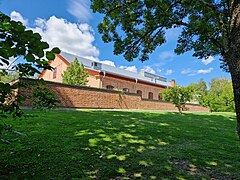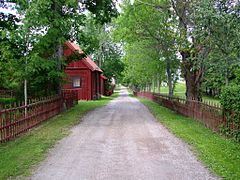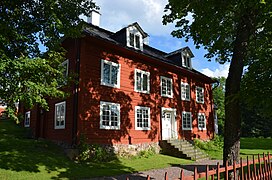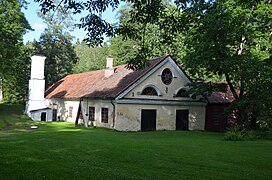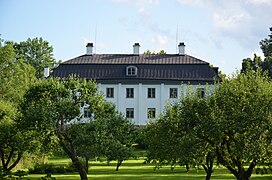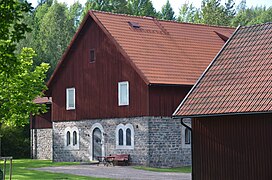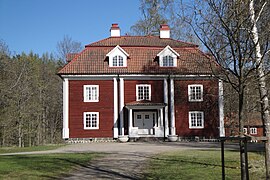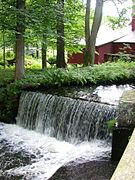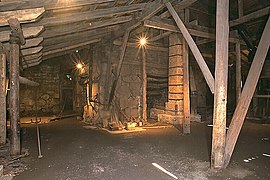Engelsberg Ironworks
| UNESCO World Heritage Site | |
|---|---|
 | |
| Location | Ängelsberg, Fagersta Municipality, Sweden |
| Criteria | Cultural: (iv) |
| Reference | 556rev |
| Inscription | 1993 (17th Session) |
| Area | 9.596 ha (23.71 acres) |
| Coordinates | 59°58′00″N 16°00′30″E / 59.96667°N 16.00833°E |
Engelsberg Ironworks (Swedish: Engelsbergs bruk) is an ironworks in Ängelsberg, a village in Fagersta Municipality in Västmanland County, Sweden. It was built in 1681 by Per Larsson Gyllenhöök (1645-1706) and developed into one of the world's most modern ironworks in the period 1700–1800. It is listed as a UNESCO World Heritage Site since 1993.
Name
[edit]Engelsberg Ironworks is named after Englika. Englika, who was born in Germany, began producing iron in Engelsberg in the 14th century.[1]
History
[edit]The history of iron production in the region dates back to at least 13th century. The local peasants both mined the ore and produced the iron using primitive furnaces.[2]
In the end of the 16th century more modern production methods were introduced in Engelsberg and production volumes increased substantially in the following decades.[2]
The mill, which historically belonged to the Västervåla parish and Norberg, was built in 1681[3] by the county sheriff Per Larsson Höök (1645–1706). By then, ironworking had already been carried out on the site for a long time by miners.[4]
Description
[edit]The preserved buildings include a manor house, the inspector's house and the smelting house with a blast furnace.[2]
UNESCO World Heritage Site
[edit]Engelsberg Ironworks is a UNESCO World Heritage Site. It was added to the list in 1993.[5] The UNESCO comments were:
Sweden's production of superior grades of iron made it a leader in this field in the 17th and 18th centuries. This site is the best-preserved and most complete example of this type of Swedish ironworks.
Gallery
[edit]-
Conference center
-
A road at Engelsberg iron works
-
The mansion with wings
-
The two slag stone towers
-
The west wing
-
The forge
-
The mansion from the garden side
-
Kitchen and pleasure garden
-
The old office
-
The archives of Axel Johnson Group
-
The old barn
-
The new office
-
The dam and blast-furnace
-
Rope railway for charcoal to the blast furnace
-
Casting house, blast furnace and air duct for preheated combustion air
References
[edit]- ^ "Världsarvet Engelsbergs bruk".
- ^ a b c "Engelsberg Ironworks".
- ^ "Ängelsberg - Uppslagsverk - NE.se". www.ne.se. Retrieved 2023-06-28.
- ^ "Engelsbergs bruk - Värlsdarvet - Fagersta kommun - turistinformation". 2010-08-12. Archived from the original on 2010-08-12. Retrieved 2023-06-28.
- ^ "Sweden".
External links
[edit]


